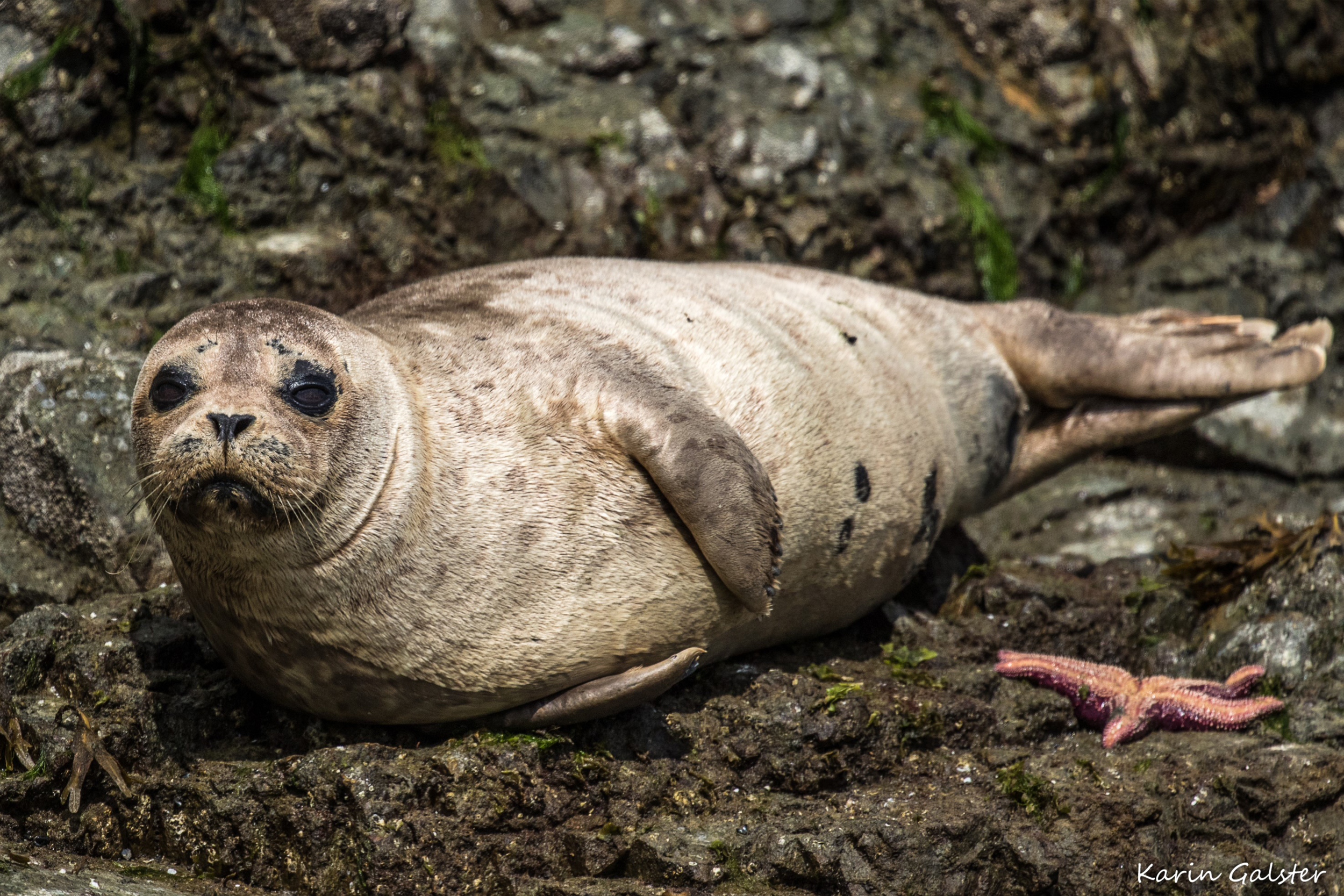The true seals, also called earless seals (Phocidea), are one of the three families within the fin-footed, semi-aquatic group of marine mammals called pinnipeds. Seals can be found in polar, subpolar and temperate climates on both hemispheres. Their diet consists primarily of fish but they are opportunistic predators who will also prey on crustaceans, molluscs, cephalopods and even penguins. They spend most of their time at sea, but return to land to rest, breed and give birth. Earless seals are even more specialized for a life in the ocean than their cousins the sea lions. Their sleek streamlined bodies lacking external organs allow them to swim more effectively and over longer distances. However due to their positioning, the hind flippers cannot be used to ”walk on all fours” like those of their sea lion cousins. Trying to move by shoving and wriggling and using their front flippers make them look rather clumsy and vulnerable on land.
On the west coast of Canada we were able to admire the harbour seal (Phoca vitulina) also known as the common seal. The various subspecies of harbour seals can be found along the European Atlantic coast (including France), Iceland and Greenland as well as the Pacific coastlines in North America, Russia and Japan. It shares part of its range with the grey seal (Halichoerus grypus) but can easily be distinguished from the latter due to its distinctive V-shaped nostrils, its rounded head and a slightly concave profile. Their fur coats can be any colour from brown, tan, dark or light gray to silvery white. In addition idividual harbour seals have a unique pattern of spots. Their feeding and foraging activity is largely dependant on the tides, they can often be seen hauled out, basking in the sun on resting sites during low tide. Highly sensitive wiskers (vibrissae) help them detect prey even in troubled water and most of the time these are swallowed whole.



























